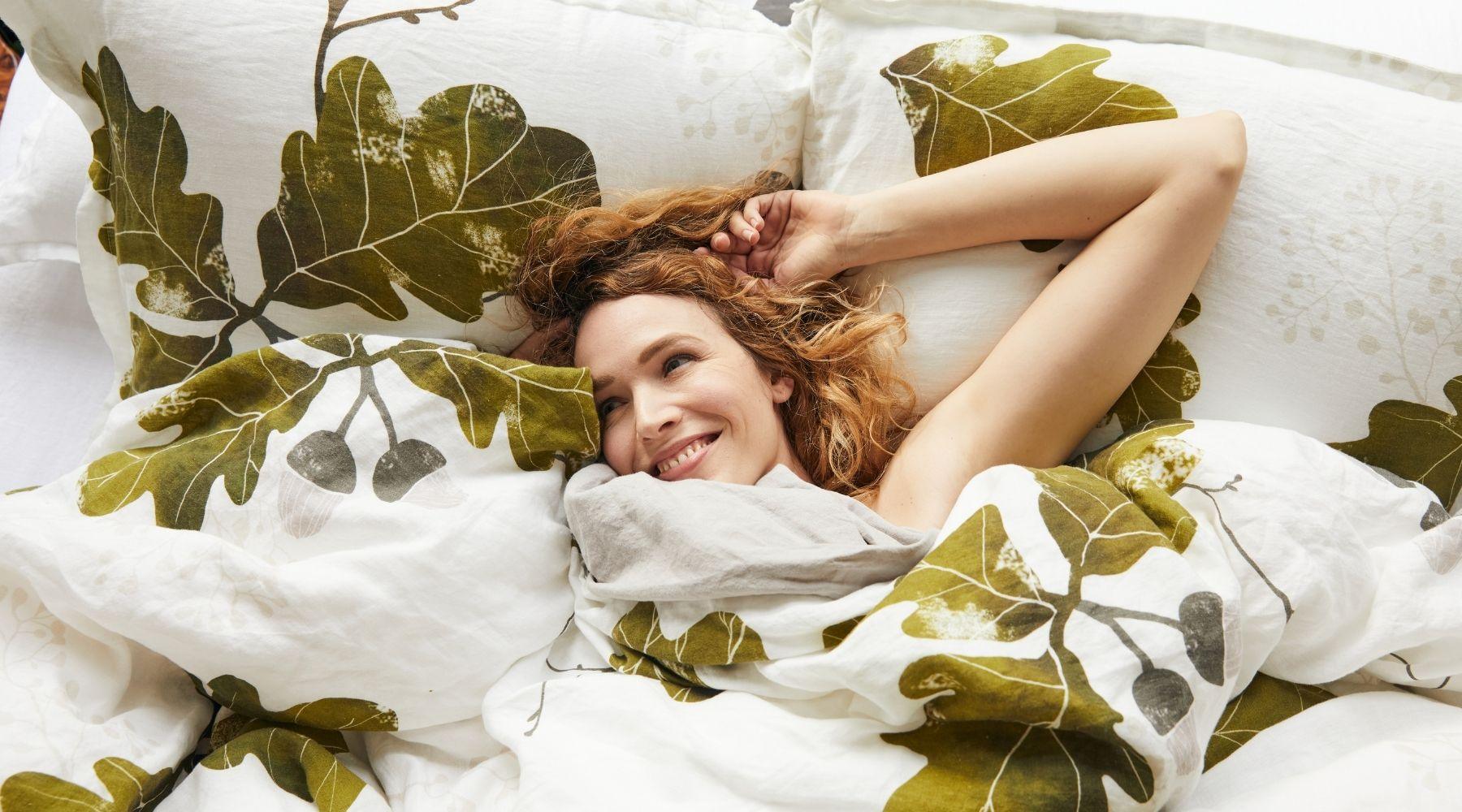
Is Linen Bedding Good for Winter?
Linen is usually associated with summer—a fabric for floaty dresses, billowing shirts, and of course, our own organic linen duvet covers. But in truth, linen’s unique properties make it perfect for year-round use, even in winter.
Thermoregulation—the Secret to a Great Night’s Sleep
Temperature regulation is a struggle for many of us during the warmer months but the problem reaches new extremes in winter. You feel cold when you go to bed, so you bury yourself under a mountain of top sheets, duvets, comforters, and quilts. This works, but a little too well—the body’s heat gets trapped against layers of synthetic fabrics, so the temperature keeps on rising, and you wake up hot and uncomfortable.
We’ve written an entire blog post on how linen helps you sleep in summer, but many of those same features also make it the perfect winter bedding. Linen is a natural thermoregulator, meaning it cools you down when you’re warm and warms you up when you’re cool.
Linen’s not just for top layers: a linen fitted sheet will also wick away heat and moisture from underneath you. It’s particularly useful if you have a memory foam mattress, as the synthetic foam layers tend to overheat. At The Modern Dane, we have a variety of beautiful linen fitted sheets that will keep you comfortable year-round.
How Linen Bedding Helps You Sleep During Winter
Linen is made from flax stem cores, which each have thousands of tiny holes along their length. This porousness allows air to move freely both ways, so your body stays at a consistent temperature. In fact, linen conducts heat five times more effectively than wool.
Along with heat, moisture can also keep us awake during winter. Synthetic bedding traps the body’s perspiration, so you wake up feeling sweaty and clammy. When you throw off the covers, that moisture rapidly cools down the body—leaving you feeling freezing cold—and the whole cycle starts again. Fortunately, the same porousness that makes linen great at conducting heat also makes it effective at absorbing and wicking away moisture. In fact, linen can absorb up to 20 percent of its weight before it starts to feel damp.
Linen strands are thicker and longer than most textiles—you can even distinguish the individual strands in the weave of our European linen duvet covers. The thickness of the linen strands gives our Scandinavian duvet covers the perfect amount of natural heft, helping seal off edge-of-bed drafts while being light enough to move around in.
A Natural Look for Every Season
European linen has a casual, slightly rumpled look and a rustic feel that’s textured without being rough or scratchy. It’s the epitome of hygge—the Danish quality of warmth and wellbeing that comes from, among other things, sinking into a pile of all-natural, Danish-style bedding. One of our newest styles, Hørblomst, is covered with the sky-blue flax flowers of summer, ideal for keeping you cozy in winter while dreaming of warmer days ahead.
Linen’s Perfect Partners
You’ll get the benefit of organic linen duvet covers no matter what you’re using them with, but you’ll feel even more of a difference if the rest of your bedding works with it, rather than against it.
Natural duvet inserts are usually best: down, feather, wool, and silk duvets are insulating yet breathable. Synthetic vegan options, however, have come a long way—some even use fiber clusters to mimic the airy structure of down duvets. When buying a duvet, check the product details carefully, and avoid buying if any reviews mention overheating or a lack of breathability.
Duvets come with different TOG (Thermal Overall Grade) ratings, up to a maximum of 18—a minimum of 12 is recommended for winter. Your best option may be an “all-seasons” duvet, with two separate duvets that clip together to make a thicker one. For example, a 4.5-tog summer duvet and a 10-tog spring/fall duvet clip together to make a 13.5-tog winter duvet, so you’re covered all year round.

Don’t forget your sleepwear—it’s not much use upgrading your bedding if you’re sleeping in sticky synthetics. You’ll be unsurprised to hear that linen pajamas are an excellent choice, though wool works well, too. Wear a linen pajama set over a wool base layer if you’re feeling particularly cold at night.
Do you already use linen sheets in winter? Or are you considering making the switch? Let us know on Instagram, Pinterest, Facebook, or Twitter!






Leave a comment
This site is protected by hCaptcha and the hCaptcha Privacy Policy and Terms of Service apply.